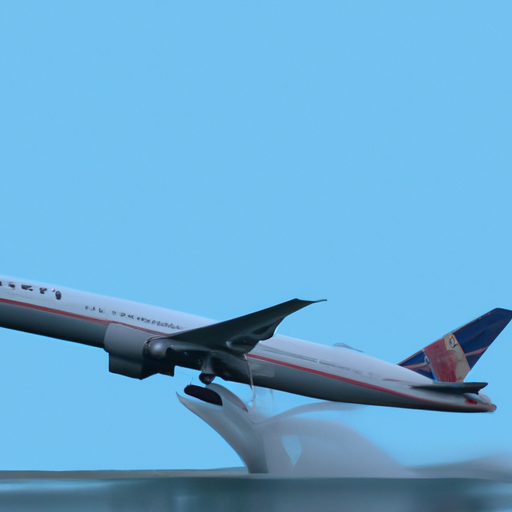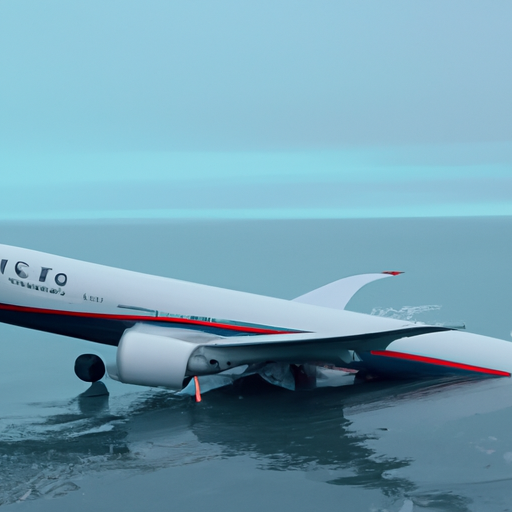
Causes and Consequences of the United Boeing 767 Emergency Slide Malfunction
On a seemingly ordinary day, passengers aboard a United Boeing 767 flight were in for a surprise when the emergency slide unexpectedly deployed mid-flight. This incident left many wondering what could have caused such a malfunction and what the consequences might be. In this article, we will explore the causes and consequences of the United Boeing 767 emergency slide malfunction.
Firstly, let’s delve into the possible causes of this unexpected event. One potential factor could be a mechanical failure within the aircraft’s emergency slide system. These systems are designed to deploy in emergency situations, providing passengers with a safe exit from the aircraft. However, if there is a malfunction in the system, it can lead to an unintended deployment, as was the case with the United Boeing 767. This mechanical failure could have been caused by a variety of factors, such as wear and tear, faulty components, or inadequate maintenance.
Another possible cause could be human error. While modern aircraft are equipped with advanced safety features, they still rely on human operators to ensure their proper functioning. It is possible that a mistake was made during routine maintenance or during the pre-flight checks, leading to the unintended deployment of the emergency slide. Human error can occur due to a variety of reasons, including fatigue, distraction, or lack of proper training. Regardless of the cause, it is crucial for airlines to thoroughly investigate such incidents to prevent similar occurrences in the future.
Now, let’s consider the consequences of this emergency slide malfunction. Firstly, the unexpected deployment of the slide could have caused panic and confusion among the passengers. Imagine being mid-flight and suddenly seeing an emergency slide inflate inside the cabin. This could have led to a heightened sense of fear and anxiety among the passengers, potentially compromising their safety and well-being.
Furthermore, the deployment of the emergency slide could have caused damage to the aircraft itself. These slides are designed to rapidly inflate and provide a safe exit for passengers during emergencies. However, when deployed in an unintended manner, they can cause structural damage to the aircraft’s interior. This damage may require costly repairs and could potentially affect the aircraft’s ability to operate safely in the future.
Additionally, incidents like these can have a negative impact on an airline’s reputation. Passengers rely on airlines to prioritize their safety and well-being. When incidents like the United Boeing 767 emergency slide malfunction occur, it can erode trust and confidence in the airline’s ability to ensure passenger safety. This can lead to a decline in customer loyalty and a decrease in bookings, ultimately affecting the airline’s bottom line.
In conclusion, the unexpected deployment of the United Boeing 767 emergency slide raises important questions about the causes and consequences of such malfunctions. Mechanical failures and human error are potential causes that need to be thoroughly investigated to prevent similar incidents in the future. The consequences of these malfunctions can range from passenger panic and damage to the aircraft to a negative impact on an airline’s reputation. It is crucial for airlines to prioritize safety and invest in regular maintenance and training to ensure the well-being of their passengers and the integrity of their aircraft.
Safety Measures and Regulations for Aircraft Emergency Slides

Safety Measures and Regulations for Aircraft Emergency Slides
When it comes to air travel, safety is of utmost importance. Passengers rely on airlines to ensure their well-being throughout their journey. One crucial aspect of aviation safety is the emergency slide, which plays a vital role in evacuating passengers in case of an emergency. However, recent incidents have raised concerns about the reliability of these slides. One such incident involved a United Boeing 767, where an emergency slide unexpectedly deployed during a flight. This incident highlights the need for stringent safety measures and regulations for aircraft emergency slides.
Emergency slides are designed to rapidly evacuate passengers from an aircraft in the event of an emergency landing or evacuation. These slides are typically made of durable materials such as reinforced fabric or rubber, capable of withstanding extreme conditions. They are stored in compartments within the aircraft and can be manually or automatically deployed when needed. While emergency slides are essential for passenger safety, incidents like the unexpected deployment on the United Boeing 767 raise questions about their reliability.
To ensure the safety and reliability of emergency slides, aviation authorities have established strict regulations and guidelines. These regulations cover various aspects, including slide design, maintenance, and deployment procedures. For instance, the Federal Aviation Administration (FAA) in the United States sets standards for emergency slide design and performance. These standards include requirements for slide strength, inflation time, and slide angles to ensure safe and efficient evacuation.
Regular maintenance and inspections are also crucial to ensure the proper functioning of emergency slides. Airlines are required to adhere to maintenance schedules and conduct routine inspections to identify any potential issues. These inspections involve checking the slide’s inflation system, fabric integrity, and overall condition. Any signs of wear, tear, or damage must be addressed promptly to prevent malfunctions during an emergency.
In addition to design and maintenance, crew training plays a vital role in ensuring the safe deployment and use of emergency slides. Flight attendants undergo rigorous training programs that cover emergency procedures, including slide deployment and evacuation techniques. They are trained to handle various scenarios, such as water landings or evacuations in low visibility conditions. This training equips them with the necessary skills to guide passengers during an emergency and ensure a swift and orderly evacuation.
Despite these safety measures and regulations, incidents like the unexpected deployment of the United Boeing 767’s emergency slide can still occur. Investigations into such incidents are conducted to identify the root cause and prevent future occurrences. These investigations often involve collaboration between aviation authorities, aircraft manufacturers, and airlines to determine if there was a design flaw, maintenance issue, or human error involved.
In conclusion, safety measures and regulations for aircraft emergency slides are crucial to ensure the well-being of passengers during emergencies. These measures cover various aspects, including slide design, maintenance, and crew training. While incidents like the unexpected deployment of an emergency slide on a United Boeing 767 are concerning, they serve as reminders of the importance of continuous improvement and vigilance in aviation safety. By adhering to these measures and regulations, airlines can provide passengers with the peace of mind they deserve when traveling by air.
Impact of the United Boeing 767 Emergency Slide Incident on Passenger Confidence and Airline Reputation
The unexpected falling of a United Boeing 767 emergency slide has raised concerns about passenger confidence and airline reputation. This incident, which occurred during a routine maintenance check at Newark Liberty International Airport, has left many travelers questioning the safety measures in place on commercial flights. While accidents can happen in any industry, it is crucial for airlines to address these incidents promptly and transparently to maintain the trust of their passengers.
Passenger confidence is a vital aspect of the airline industry. Travelers need to feel safe and secure when boarding a plane, and any incident that compromises this can have a significant impact on their perception of an airline. The United Boeing 767 emergency slide incident has undoubtedly shaken the confidence of many passengers, as it highlights a potential flaw in the safety protocols of the airline. Passengers may now question whether other safety measures, such as emergency exits or life vests, are also at risk of malfunctioning.
Furthermore, incidents like these can have a lasting impact on an airline’s reputation. In today’s digital age, news spreads quickly, and negative incidents can go viral within minutes. The United Boeing 767 emergency slide incident has already garnered significant attention on social media platforms, with passengers sharing their concerns and frustrations. This negative publicity can tarnish an airline’s reputation and make potential customers think twice before booking a flight with them.
To mitigate the impact on passenger confidence and airline reputation, it is crucial for United Airlines to take swift action. Firstly, they must conduct a thorough investigation into the incident to determine the root cause and prevent similar incidents from occurring in the future. This investigation should be transparent, with regular updates provided to the public to assure passengers that their safety is the airline’s top priority.
Additionally, United Airlines should implement additional safety measures to regain passenger confidence. This could include increased maintenance checks, enhanced training for maintenance personnel, and regular inspections of emergency equipment. By demonstrating a commitment to safety and taking proactive steps to prevent future incidents, United Airlines can begin to rebuild trust with their passengers.
Communication is also key in managing the impact of this incident on passenger confidence and airline reputation. United Airlines should issue a public statement acknowledging the incident, expressing concern for the affected passengers, and outlining the steps they are taking to address the issue. This statement should be empathetic and reassuring, emphasizing the airline’s commitment to passenger safety.
Furthermore, United Airlines should actively engage with passengers on social media platforms and respond to their concerns. By addressing individual concerns and providing timely updates, the airline can demonstrate their dedication to resolving the issue and rebuilding trust.
In conclusion, the unexpected falling of a United Boeing 767 emergency slide has had a significant impact on passenger confidence and airline reputation. To mitigate this impact, United Airlines must conduct a thorough investigation, implement additional safety measures, and communicate effectively with their passengers. By taking these steps, the airline can begin to rebuild trust and reassure passengers that their safety is of utmost importance.


